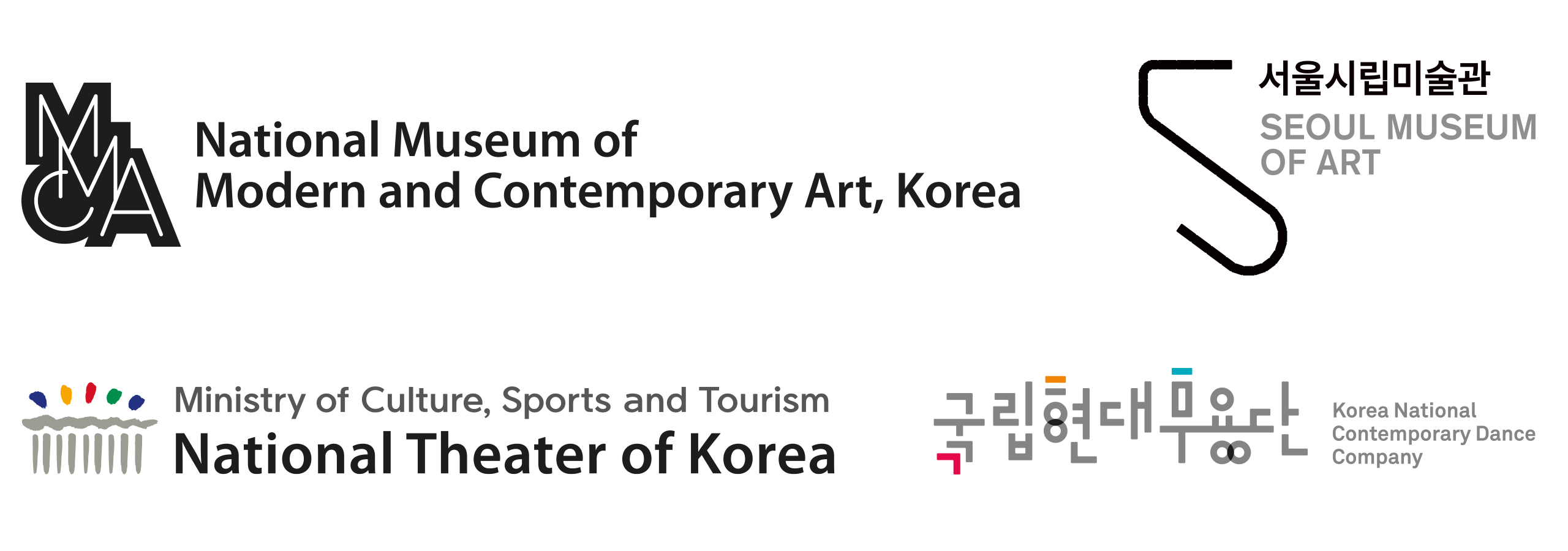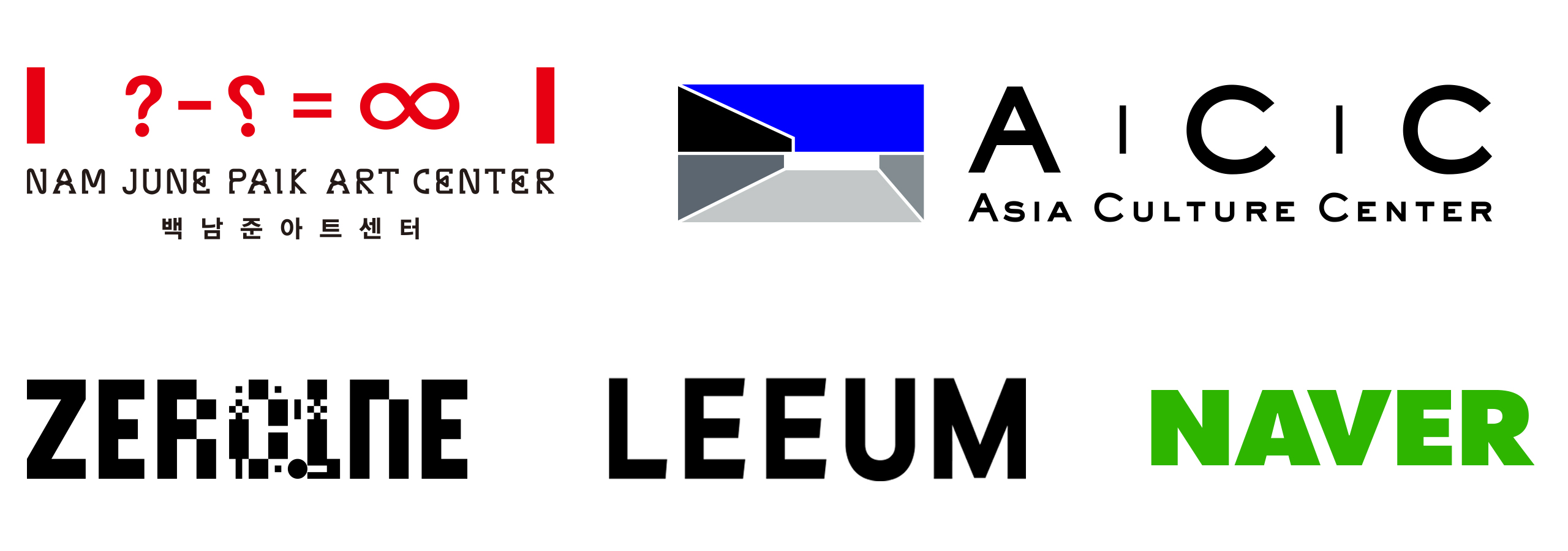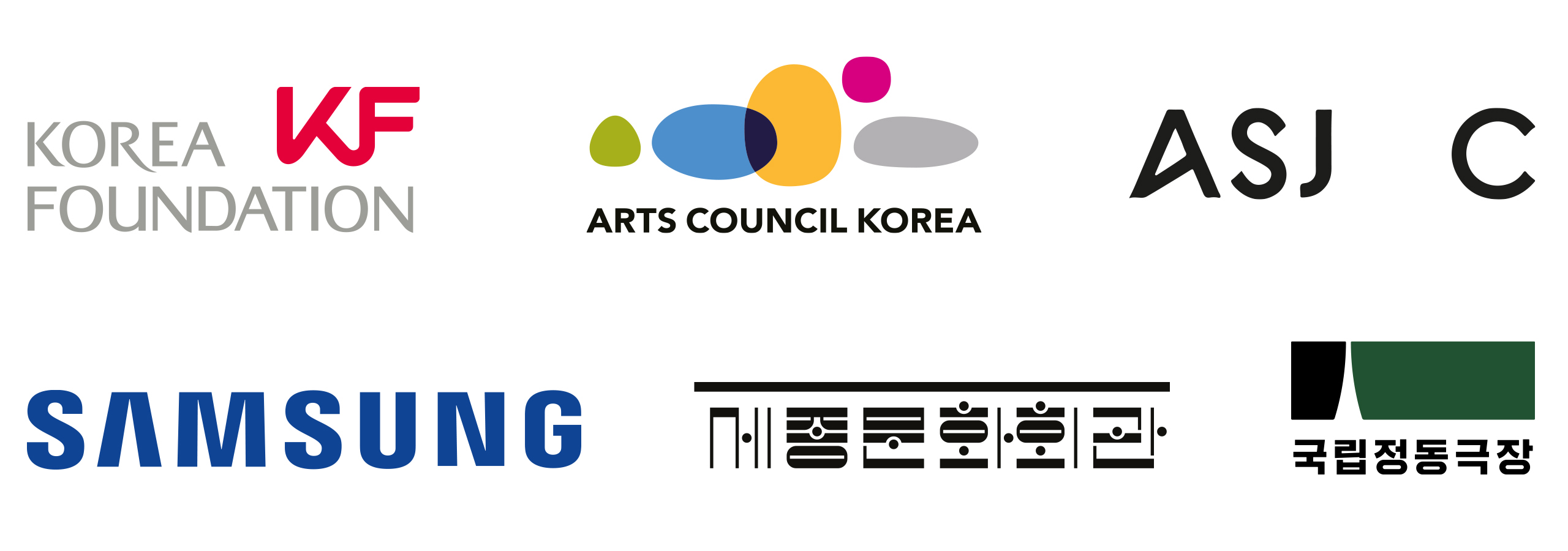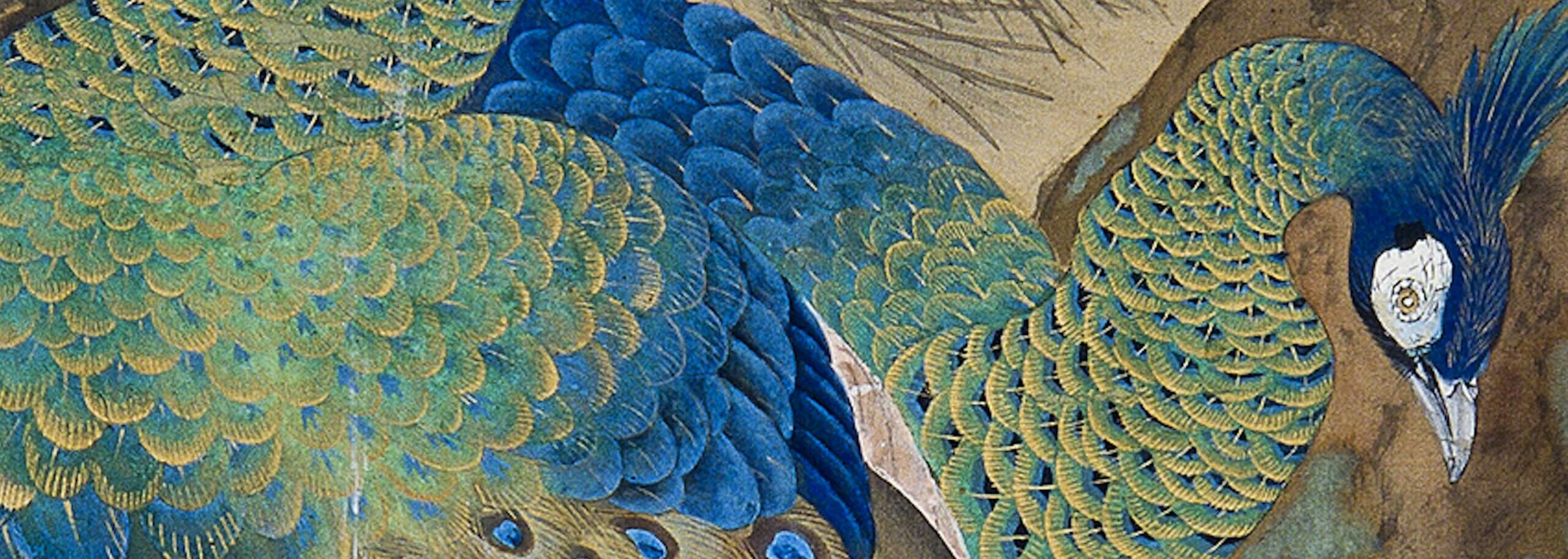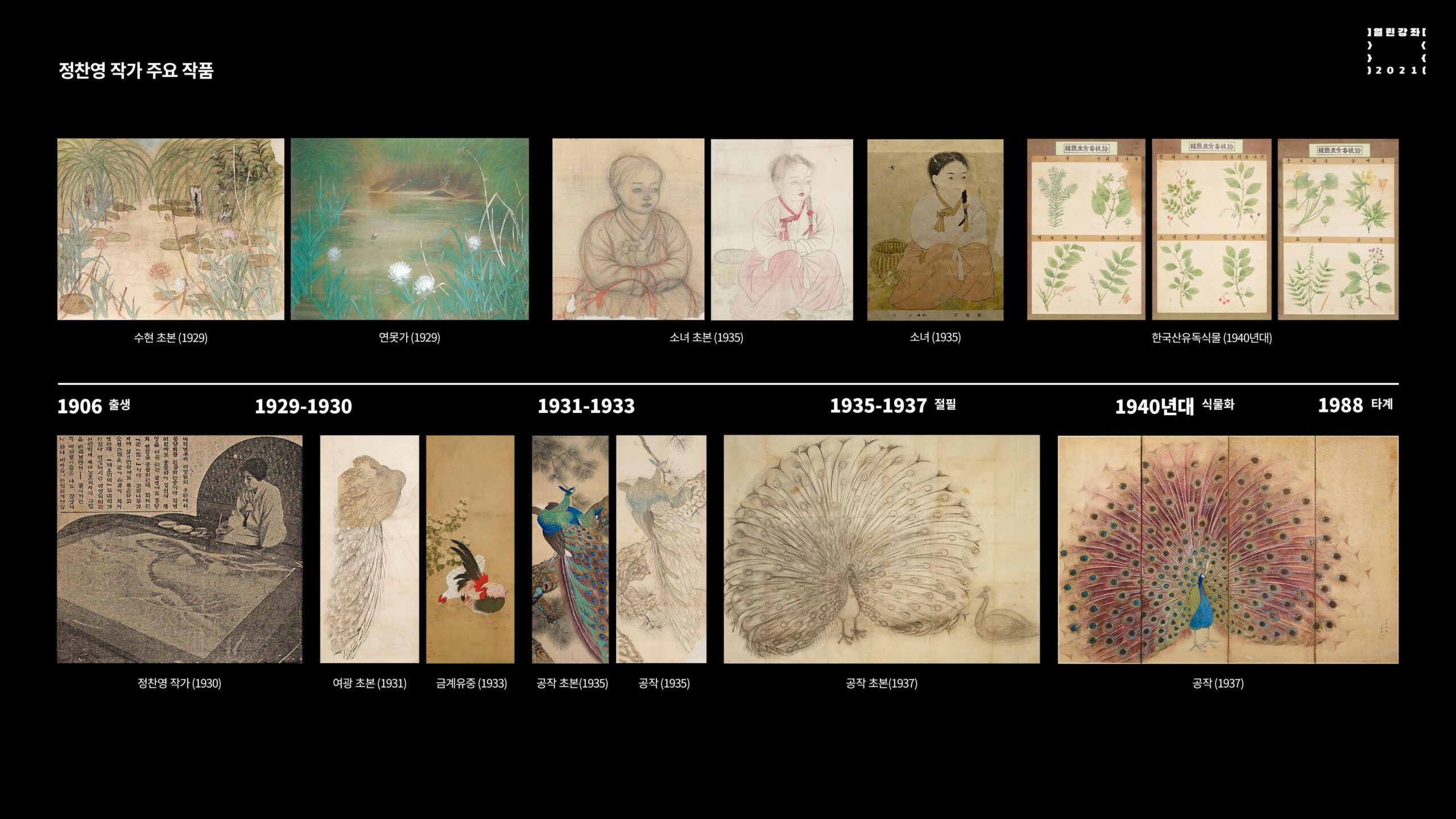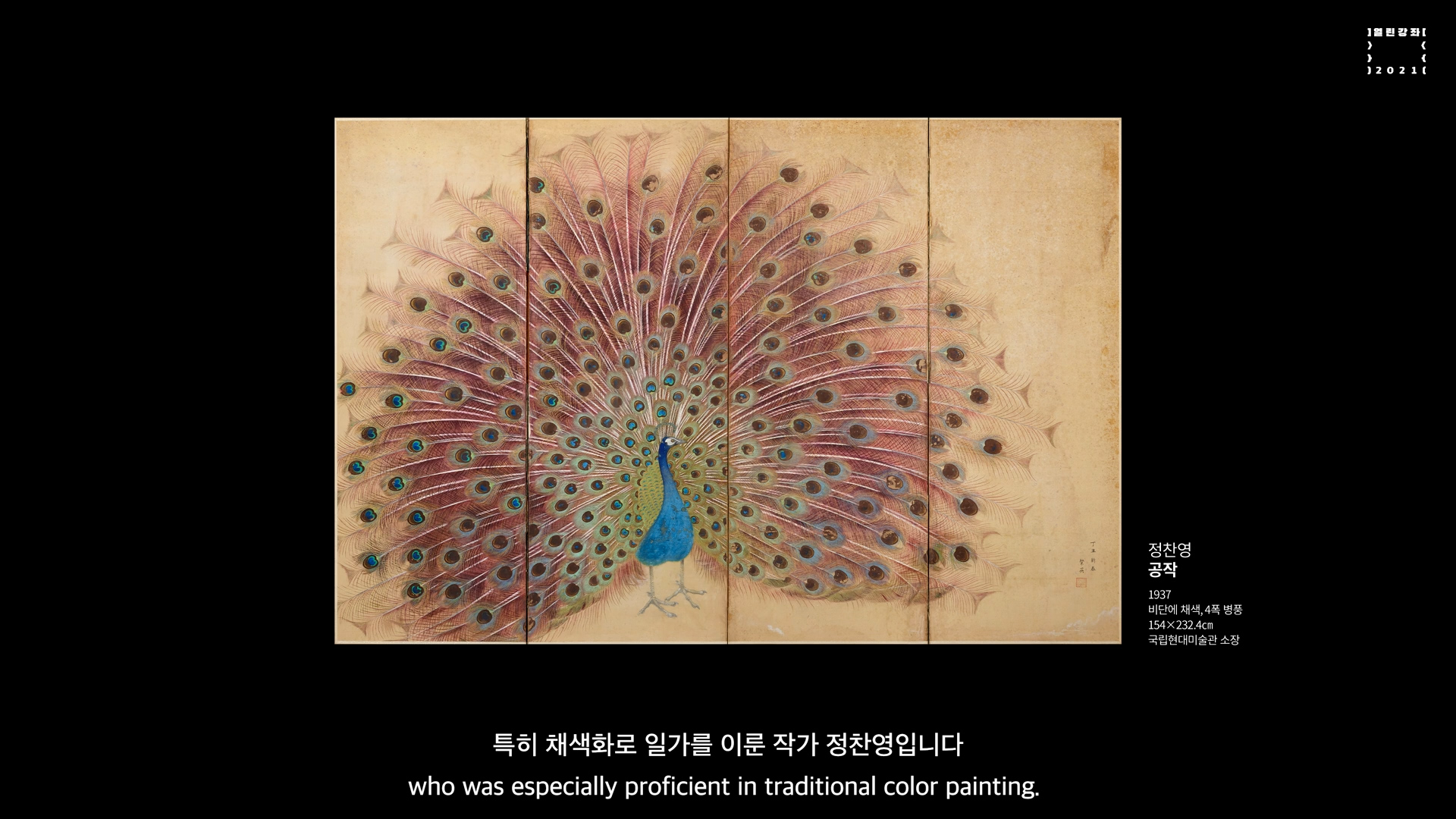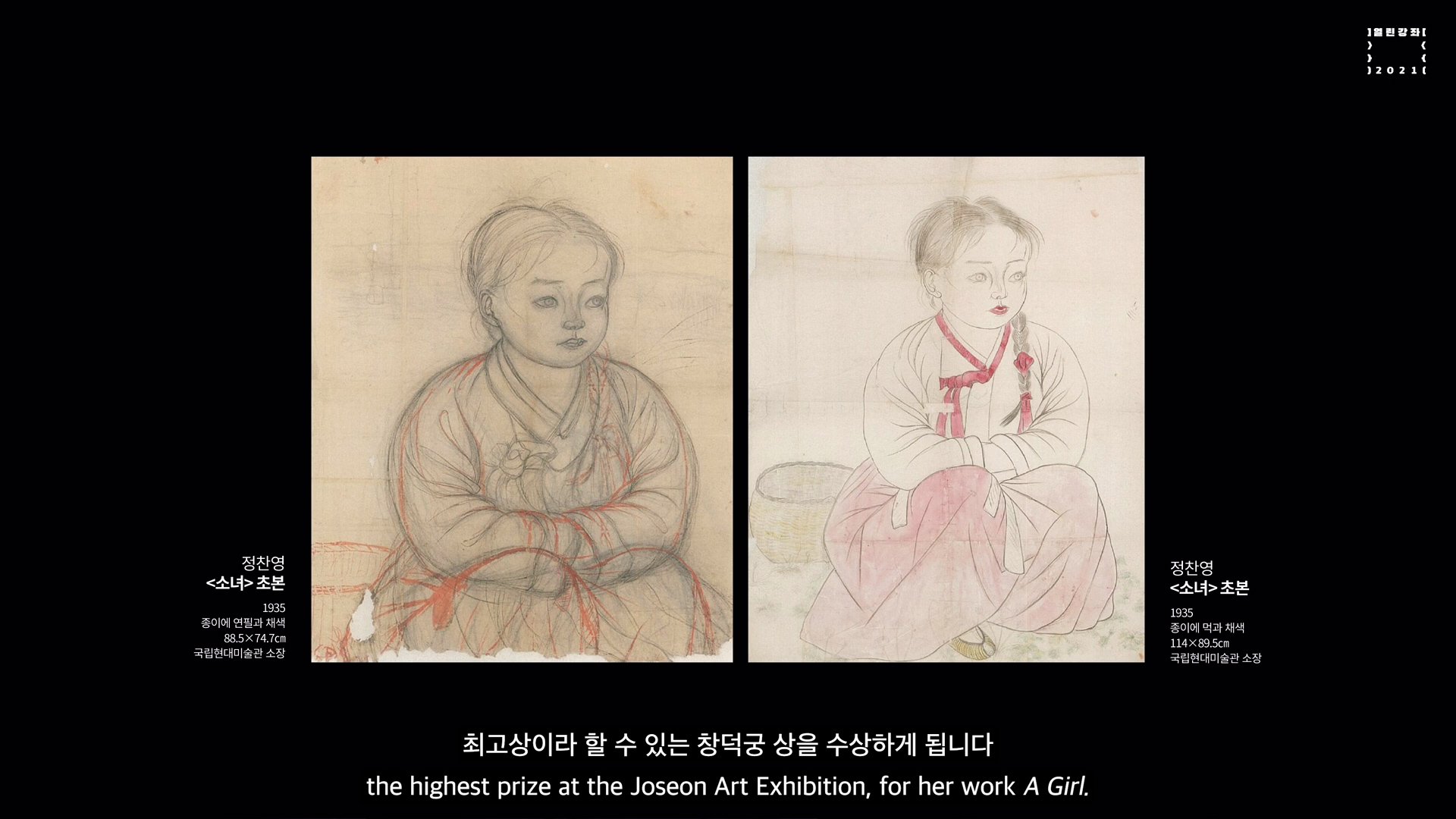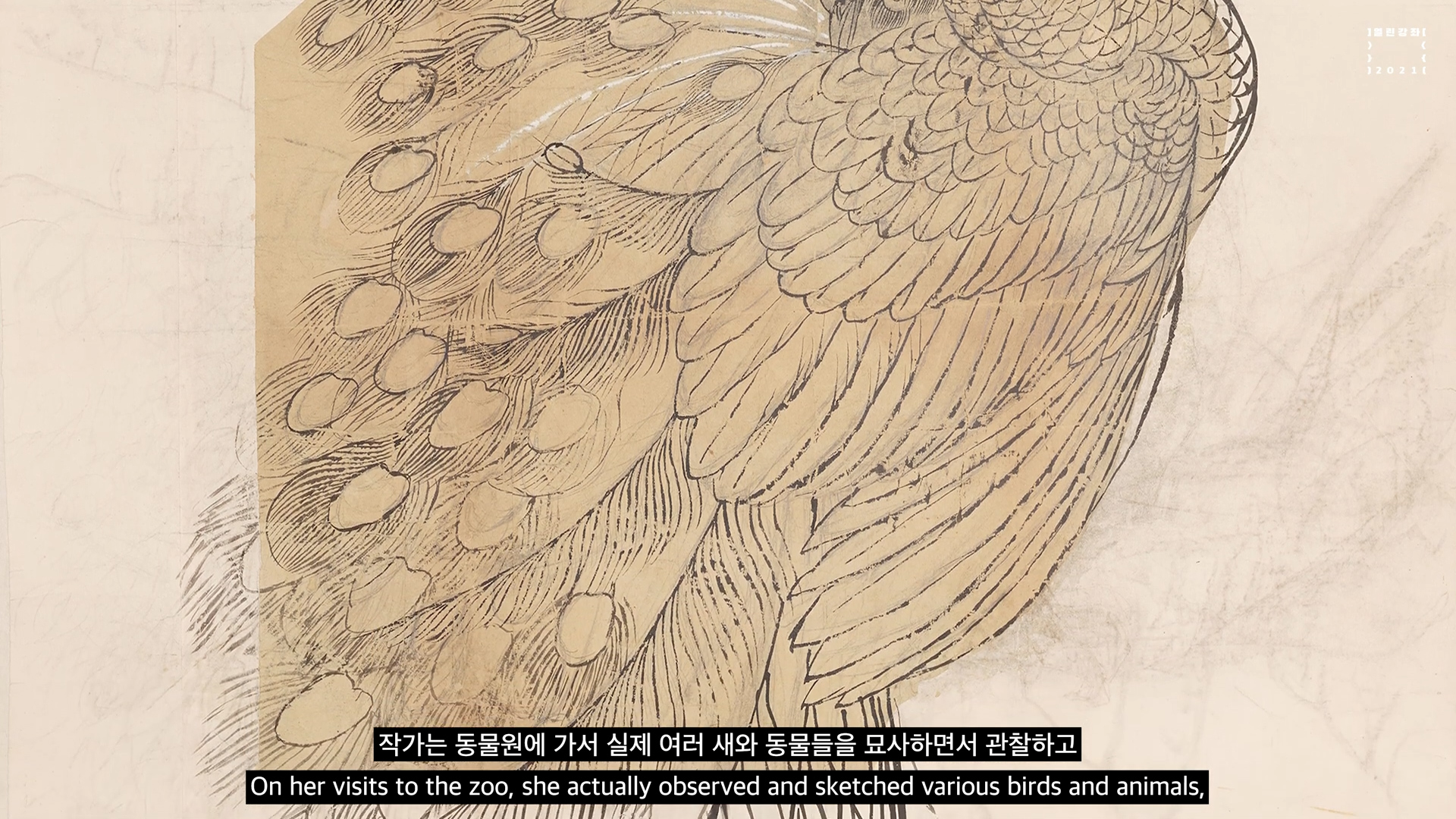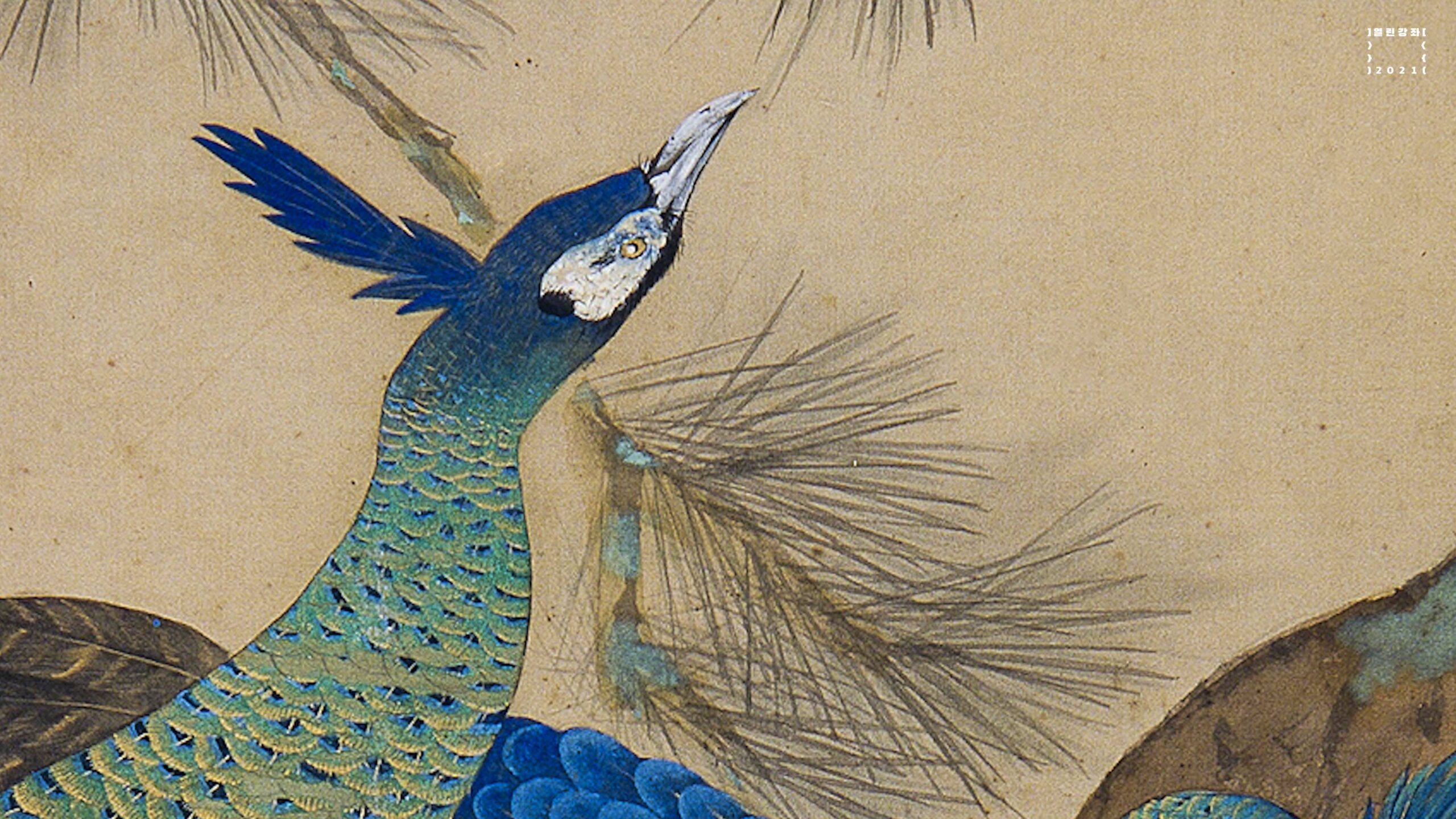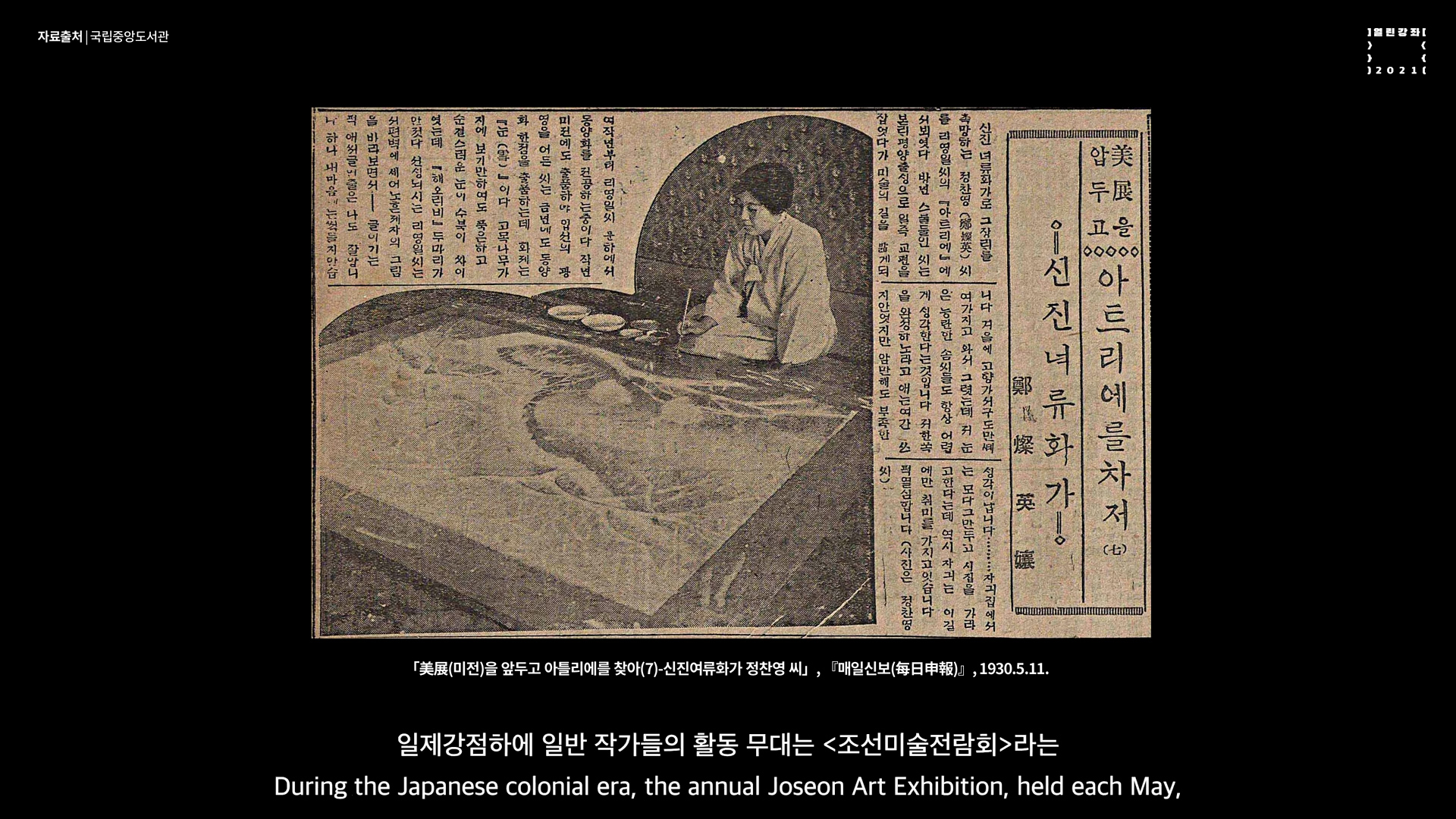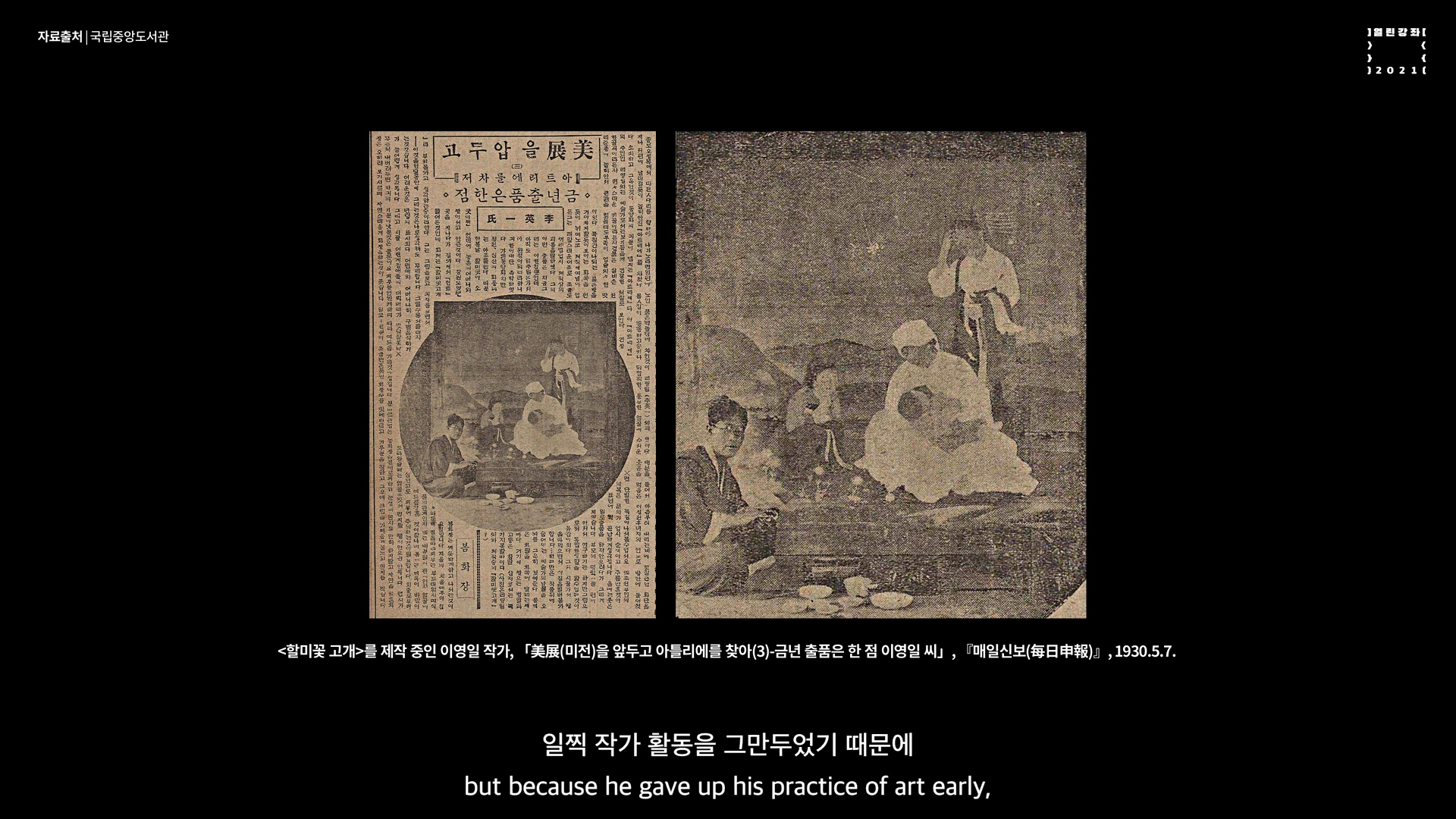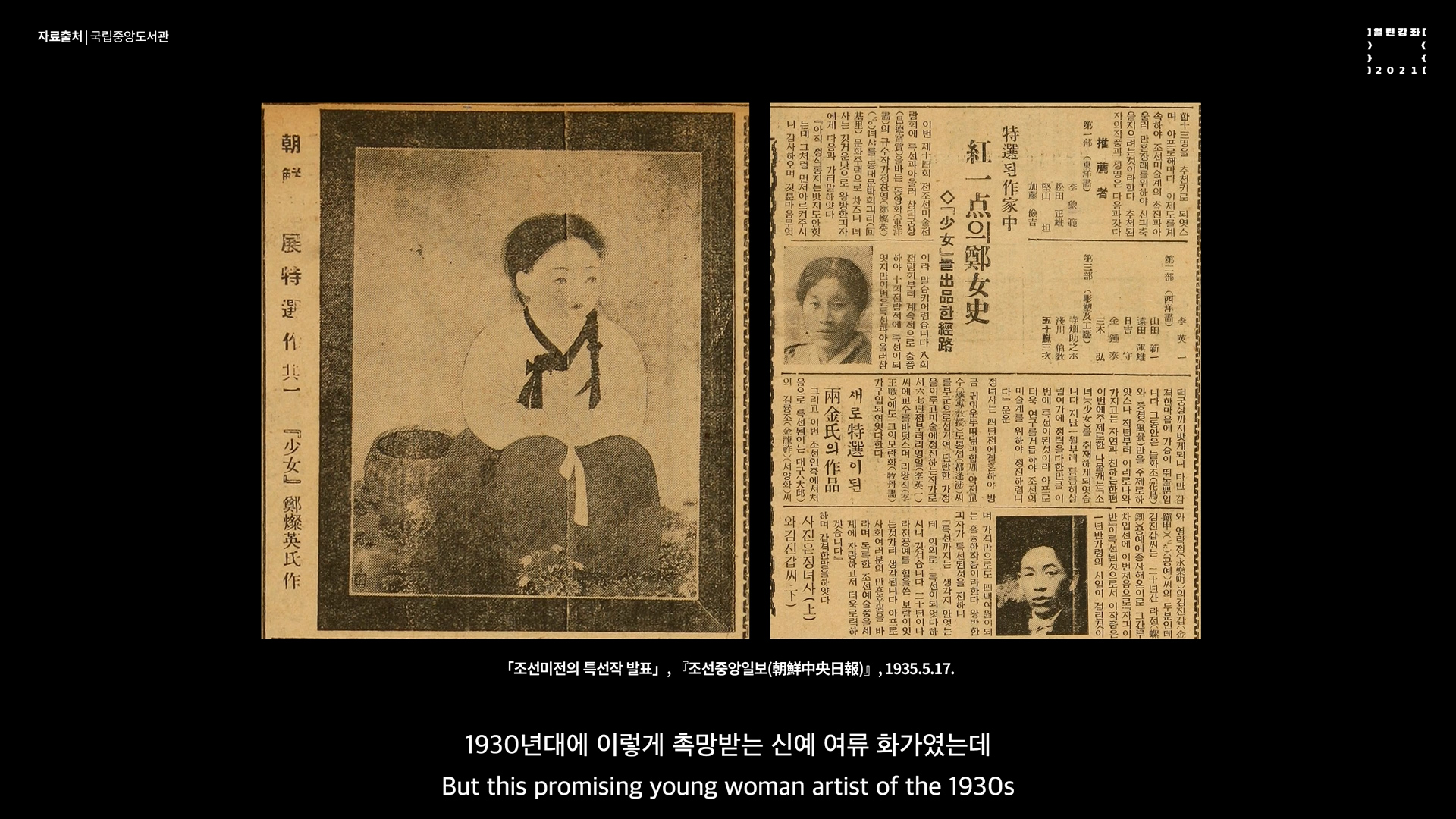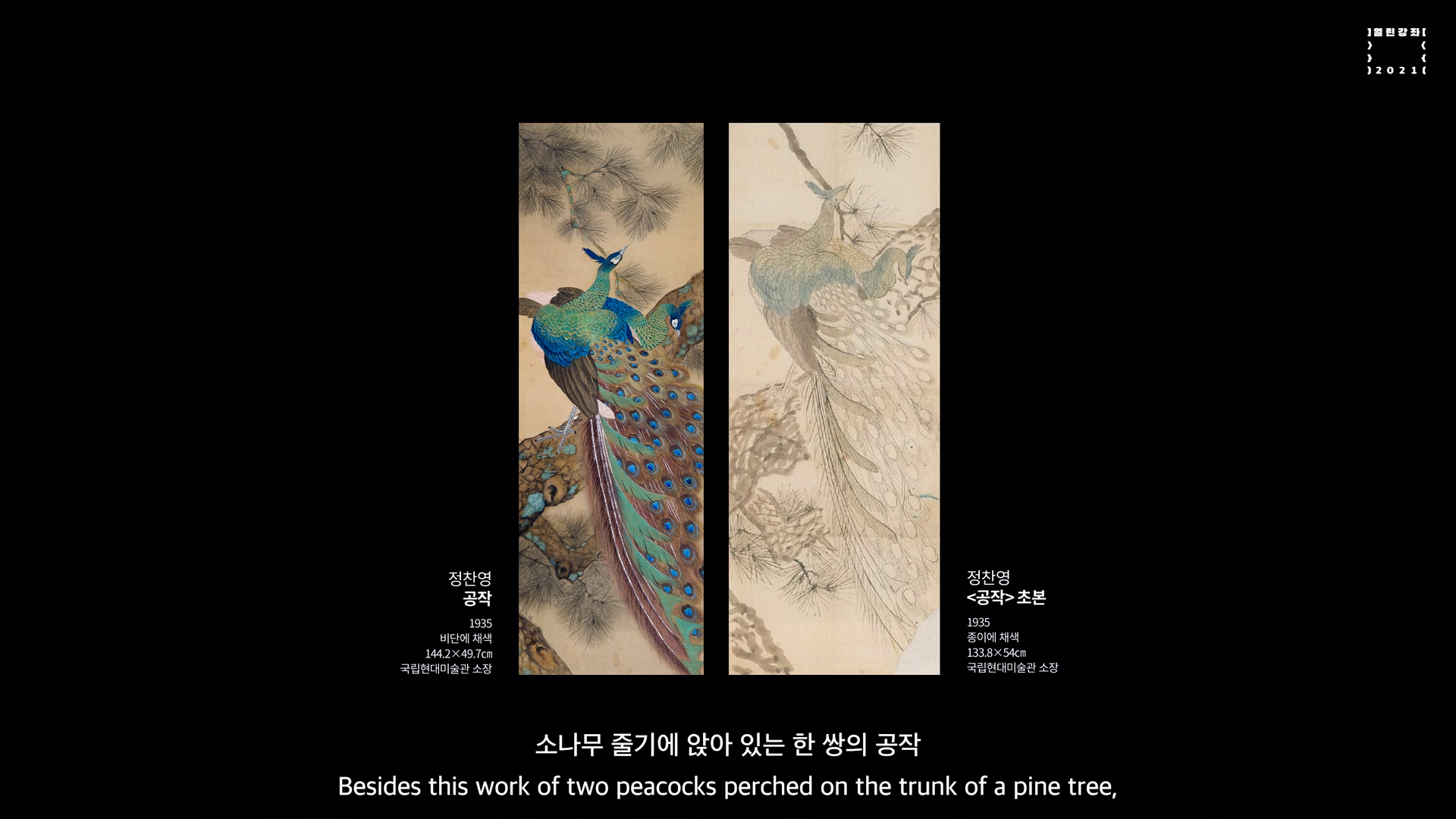Peacocks, also part of the MMCA’s collection, is a horizontally long painting of a pair of peacocks. Besides this work of two peacocks perched on the trunk of a pine tree, characterized by the birds’ long, draped feathers, there is also Peacock, which is of a single peacock with his wings fully spread, filling the entire surface of a 4-piece folding screen. Peacocks have beautiful patterns on their wings, but they are by no means easy subject matter, since the artist must portray them delicately, with a fine brush. Without masterly skills in detailed brushwork, the portrayal of peacocks and pine trees is a very challenging task. Jung Chanyoung was up to it, painting the peacocks with exquisite, fine brushwork. The mainstream of Korean traditional painting has been color pigment painting. But because such coloring technique was also characteristic of Japan, Korean public sentiment toward color painting was negative, and the genre was devaluated following liberation. Color pigment painting originated in China, where it can be categorized into the Southern School and the Northern School. Compared to the ink paintings by literary artists of the Southern School, color painting can be seen as belonging to the Northern School. Since color technique was associated with the Northern School style, artists practicing such technique in the Korean peninsula, which was under strong influence from the literary ink painting style, were not highly evaluated. Against this background, it is noteworthy that a skilled color artist such as Jung Chanyoung gained prominence.
Looking at the masterpiece Peacock, we are moved to think again about the tradition of color painting, about Jung’s artistic merit in her elaborate work, and about her inner desire to pursue a new future through the brilliant peacock, despite the dark and gloomy times. The work seems to be asking us to think about what the Peacock means to us, in our life and era today.


